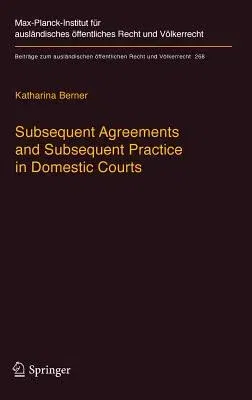Katharina Berner
(Author)Subsequent Agreements and Subsequent Practice in Domestic Courts (2017)Hardcover - 2017, 29 November 2017

Qty
1
Turbo
Ships in 2 - 3 days
In Stock
Free Delivery
Cash on Delivery
15 Days
Free Returns
Secure Checkout

Part of Series
Beiträge Zum Ausländischen Öffentlichen Recht Und Völkerrech
Part of Series
Beitrage Zum Auslandischen Offentlichen Recht Und Volkerrech
Part of Series
Beiträge Zum Ausländischen öffentlichen Recht Und Völkerrech
Print Length
300 pages
Language
English
Publisher
Springer
Date Published
29 Nov 2017
ISBN-10
3662549360
ISBN-13
9783662549360
Description
Product Details
Author:
Book Edition:
2017
Book Format:
Hardcover
Country of Origin:
NL
Date Published:
29 November 2017
Dimensions:
23.39 x
15.6 x
2.06 cm
ISBN-10:
3662549360
ISBN-13:
9783662549360
Language:
English
Location:
Berlin, Heidelberg
Pages:
300
Publisher:
Series:
Weight:
662.24 gm